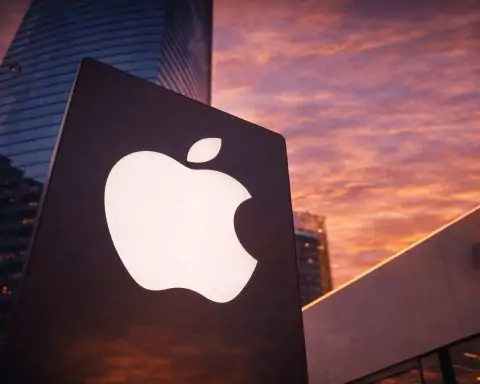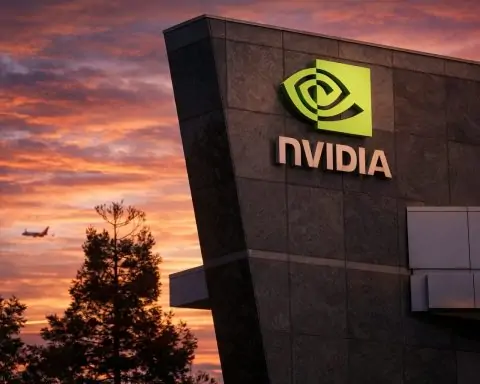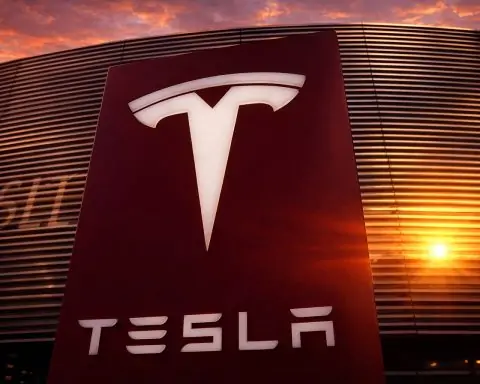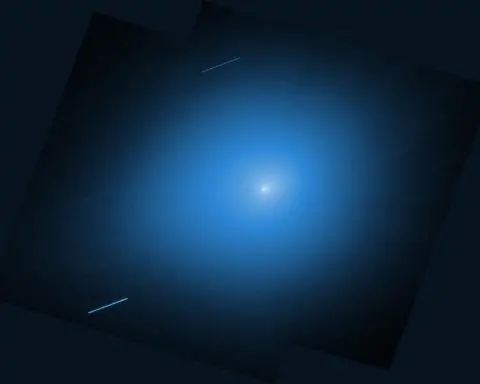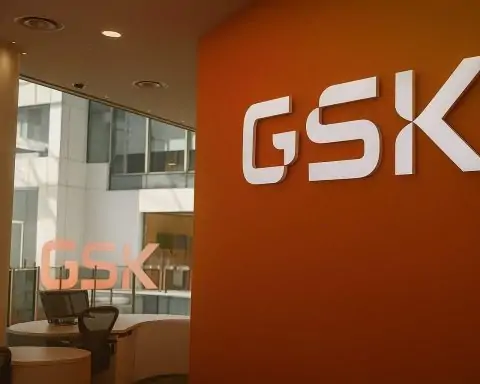Rocket Launches and Mission Highlights
- Starship Test Flight Stymied by Weather: SpaceX’s Starship Flight 10 was grounded for the second day in a row on Monday, Aug. 25, as anvil-shaped storm clouds over Starbase, Texas created an unacceptable lightning risk [1]. This followed a scrub on Sunday due to a ground systems issue (a liquid-oxygen leak) [2]. “Launch called off for tonight due to anvil clouds over launch site (lightning risk),” SpaceX CEO Elon Musk posted on X [3]. SpaceX said the team is evaluating the next opportunity, eyeing Tuesday evening’s window [4]. When it does fly, Starship Flight 10 aims to repeat May’s flight profile – releasing dummy Starlink satellites and splashing its upper stage in the Indian Ocean – while Super Heavy booster B16 attempts a controlled water landing to test out emergency landing scenarios [5] [6].
- Space Station Resupply and “Boost” Mission: Just hours before Starship’s abort, an uncrewed SpaceX Dragon cargo ship arrived at the International Space Station (ISS) early Monday morning (Aug. 25) carrying about 5,000 pounds of supplies and experiments [7]. The CRS-33 mission’s Dragon capsule docked at 7:05 a.m. ET, ahead of schedule, delivering food, science gear, and even 1,500 fresh tortillas for the crew [8]. Notably, this Dragon brought a special “boost” thruster kit in its trunk to help reboost the ISS’s orbit over its four-month stay [9] [10]. “Commercial resupply missions to the ISS deliver science that helps prove technologies for Artemis lunar missions and beyond,” said acting NASA Administrator Sean Duffy, “This flight will test 3D printing metal parts and bioprinting tissue in microgravity — technology that could give astronauts tools and medical support on future moon and Mars missions.” [11] The Dragon’s thrusters will periodically fire to counter atmospheric drag and could reduce reliance on Russia’s Progress ships to maintain station altitude [12]. (With Russia considering leaving the ISS after 2028, such independent reboost capability will be crucial [13].)
- ISS Traffic: Two Cargo Ships in One Day – On the same day as Dragon’s arrival, a Russian Progress MS-24 freighter (Progress 85P) docked to the ISS as well, a few hours earlier, delivering ~3 tons of food, fuel, and supplies to the Russian segment [14]. This double docking underscores the busy logistics in low Earth orbit, coming just two days after SpaceX’s Crew-11 mission arrived on station (on Aug. 23) to swap out crew.
- India’s Gaganyaan Passes Parachute Test: The Indian Space Research Organisation (ISRO) notched a key milestone toward its first crewed spaceflight. On Aug. 24, ISRO conducted the Integrated Air Drop Test (IADT-01) of the Gaganyaan crew module’s deceleration system, simulating an emergency abort landing [15]. A 4.8-ton boilerplate crew capsule was lifted by an Air Force Chinook helicopter and released from ~3 km altitude [16]. It successfully deployed a sequence of 10 parachutes (drogues, pilots, and three main canopies) that slowed the module to ~8 m/s for a safe splashdown off India’s east coast [17]. The test validated the complex parachute system that will be used to return Indian astronauts to Earth, demonstrating end-to-end performance in one “pad abort” scenario. The dummy capsule was safely recovered by the Indian Navy [18]. ISRO hailed the drop test as a major step toward launching Gaganyaan – India’s inaugural human spaceflight – slated for as soon as 2025–26.
- TOMEX+ Sounding Rockets Delayed by Weather: At NASA’s Wallops Flight Facility in Virginia, a unique suborbital experiment has been repeatedly postponed. The TOMEX+ mission (Turbulent Oxygen Mixing Experiment Plus) plans to launch a trio of sounding rockets to probe turbulence in the upper atmosphere, but attempts on Aug. 24 and 25 were scrubbed due to cloudy weather and rough seas at the payload recovery zone [19]. NASA is now targeting Tuesday night, Aug. 26 for the next launch window [20]. If skies clear, three rockets will launch in quick succession to blast laser pulses into the mesosphere (~85–105 km up), exciting sodium atoms there to create glowing traces of turbulent air flow [21]. This innovative experiment will produce visible streaks in the night sky over the U.S. East Coast, mapping the dynamics at the mesopause (the boundary between atmosphere and space) which can affect high-altitude weather, satellite drag, and even other planets’ atmospheres [22]. Residents across the Mid-Atlantic may glimpse the rockets’ ascent for up to 40 seconds, pending clear skies [23] [24].
- China Launches Broadband Constellation Satellites: Late on Monday (Aug. 25), China carried out a Long March 8A rocket launch from Hainan, deploying the 10th batch of “Guowang” satellites for its planned low-Earth-orbit broadband megaconstellation [25]. The nighttime liftoff lofted several small satellites to orbit as part of China’s ambitious national LEO communications network, which is reportedly aiming to rival SpaceX’s Starlink. This marks the first operational Long March 8A flight; China’s state media said the mission “continues a flurry of launches” building out the country’s answer to commercial satcom constellations [26]. (In a related development, Chinese officials also indicated that Long March 8 variants will soon attempt reusable booster landings – see below.)
- Global Launch Preview – Aug. 26: Looking ahead to Tuesday, SpaceX is scheduled to launch Luxembourg’s first military observation satellite, NAOS, on Aug. 26 from Vandenberg Space Force Base in California [27]. The Falcon 9 (booster B1063) is set to lift off at ~11:53 a.m. local time (18:53 UTC) carrying NAOS (National Advanced Optical System), a 70-cm-resolution Earth-imaging satellite developed for Luxembourg’s Ministry of Defense [28] [29]. Weighing ~700 kg and built by OHB Italia, NAOS will operate in a 450 km sun-synchronous orbit to provide high-resolution imagery for Luxembourg’s defense and NATO allies [30] [31]. The mission underscores Luxembourg’s growing role in space – “a strategic investment, further cementing [the country’s] role as a spacefaring nation,” local officials said [32]. After deploying NAOS, the Falcon 9’s reusable booster will attempt a return to Landing Zone 4 at Vandenberg [33]. (The launch will also carry secondary payloads from India’s Dhruva Space, Planet Labs, and others [34].) If weather intervenes, backup launch windows extend later into the week [35].
Breakthrough Scientific Discoveries and Tech Advances
- New Moon Found Orbiting Uranus: Astronomers announced a previously unknown moon of Uranus – the first discovered around the icy planet in roughly 20 years. Using NASA’s James Webb Space Telescope (JWST), a team from Southwest Research Institute identified the tiny moon (provisionally named S/2025 U1) in images taken in February [36] [37]. At an estimated ~6 miles (10 km) across, this little rock is smaller and fainter than any Uranian moon seen before, which is why Voyager 2 missed it back in 1986 [38] [39]. It brings Uranus’s moon count to 29 [40]. The newfound moon orbits just outside Uranus’s bright rings, among a crowded pack of inner satellites. Scientists say its discovery hints that even more small moons may be lurking in the Uranian system. “No other planet has as many small inner moons as Uranus, and their complex inter-relationships with the rings hint at a chaotic history that blurs the boundary between a ring system and a system of moons,” said Dr. Matthew Tiscareno of the SETI Institute. “Moreover, the new moon is smaller and much fainter than the smallest of the previously known inner moons, making it likely that even more complexity remains to be discovered.” [41] The discovery – made by stacking ten 40-minute JWST exposures – showcases Webb’s power. It also bolsters the case for a future Uranus probe, as scientists suspect the planet’s rings and inner moons hold clues to a violent past (perhaps a giant impact) [42] [43].
- Sun Telescope Sees Record-Detail Solar Flare: In solar science, the National Science Foundation’s Inouye Solar Telescope (the world’s largest solar observatory, in Hawai‘i) has delivered record-breaking images that resolve our star’s atmosphere at never-before-seen scales [44]. Researchers using Inouye captured an X1.3-class solar flare on Aug. 8, 2024, and in the data they identified ultra-fine strands of plasma called coronal loops only 20–50 km wide – the thinnest solar loops ever observed [45] [46]. These dark, threadlike loop structures appeared above the flare’s bright ribbons during its decay phase. The findings, published this week in Astrophysical Journal Letters, finally confirm decades-old theories that the Sun’s magnetic energy is organized on extremely small scales (tens of kilometers) [47] [48]. “We went in looking for one thing and stumbled across something even more intriguing,” said Dr. Maria Kazachenko, a co-author on the study [49]. The ability to directly observe such fine magnetic threads is “a landmark moment in solar science,” added lead author Cole Tamburri – “It’s like going from seeing a forest to suddenly seeing every single tree.” [50] These insights will improve models of how solar flares erupt and potentially enhance space-weather forecasting, since the untangling of these mini-loop “building blocks” is thought to trigger flares and coronal mass ejections that can impact Earth [51] [52]. The Inouye telescope’s cutting-edge optics (resolving ~18 miles on the Sun’s surface) made this discovery possible, and scientists are excited to apply its capabilities to study even smaller features and fast-evolving solar phenomena [53] [54].
- (More Space Highlights): In other news, NASA’s Voyager 2 spacecraft – now 12 billion miles away – briefly went silent in late July after a mistaken command, but engineers reestablished contact on Aug. 4 by “pinging” the 46-year-old probe [55] [56]. Voyager 2 continues to send data from interstellar space, much to everyone’s relief. Meanwhile, astronomers using ground observatories in Chile reported a rare “Black Moon” occurred on Aug. 23 (the second new moon in a calendar month), followed by a close pairing of the crescent Moon and Mars on Aug. 26 in the evening sky [57] [58] – a treat for skywatchers. And in the hunt for exoplanets, an international team announced discovery of a giant planet (about 13 times Jupiter’s mass) on a wildly eccentric 11-year orbit around the star AF Leporis, just 87 light-years away – one of the most extreme exoplanets found to date [59]. Every week seems to bring new cosmic revelations as our observation tools grow more powerful.
Policy and Regulatory Developments
- FAA Scrutiny for Starship in Florida: Even as SpaceX pushes Starship’s test schedule, U.S. regulators are evaluating its future operations. The Federal Aviation Administration (FAA) has published a draft Environmental Impact Statement (EIS) for SpaceX’s plan to launch Starship/Super Heavy rockets from NASA’s Kennedy Space Center (KSC) in Florida [60]. The proposal would allow up to 44 Starship launches and 44 landings per year at KSC’s Launch Complex 39A (with up to 88 static fire tests annually) [61]. This represents an ambitious cadence on par with SpaceX’s South Texas site. The FAA is holding public hearings on Aug. 26 and 28 in Florida to gather community feedback, and a virtual meeting on Sept. 3 [62]. Public comments are open until Sept. 22 [63]. Key issues under review include noise, wildlife and coastal impacts around Cape Canaveral. SpaceX CEO Elon Musk has voiced optimism that Starship launches from Florida could begin in 2025 if the environmental and safety approvals clear. NASA, which relies on Pad 39A for crew missions, is closely watching the process too, since Starship will eventually play a role in the Artemis lunar program. The FAA’s final EIS and licensing decision – expected in 2026 – will determine how quickly SpaceX can scale up Starship operations on the Space Coast.
- Russia Postpones Lunar & Venus Probes: Facing budget and technical pressures, Russia has delayed its next Moon and Venus missions again. According to the Russian Academy of Sciences, the planned Luna-26 lunar orbiter will now launch in 2028, and the long-discussed Venera-D Venus mission has slipped to 2036 [64] – at least a year later than previously timetabled for each. (Roscosmos has not officially confirmed the new dates [65].) Luna-26 is an orbital mapper meant to scout landing sites and relay for future landers, while Venera-D would be Russia’s first Venus lander since the Soviet era, tasked with studying the planet’s extreme greenhouse climate and possibly searching for signs of microbial life in the clouds [66]. Both projects have suffered repeated postponements. Russia’s uncrewed Luna-25 lander crashed during descent in August 2023, underscoring the challenges in rejuvenating its deep-space program [67]. Officials cited a desire not to “rush” the spacecraft contractor (Lavochkin Association) and the need to upgrade aging facilities [68]. The Kremlin last year earmarked $55 billion for space through 2035 [69], but sanctions and isolation since the Ukraine war have strained high-tech production. The latest delays indicate Russia’s civil space ambitions (outside of the ISS partnership) continue to face headwinds. Observers note that by 2036, China and the U.S. may already have sample-return missions at Venus, potentially making Venera-D scientifically less unique if it waits that long.
- U.S.–China Space Relations: In a rare diplomatic engagement, the heads of NASA and Roscosmos met face-to-face at Kennedy Space Center in late July to discuss keeping the ISS partnership going and potential cooperation on lunar projects [70] [71]. This was the first such meeting since 2018, reflecting tentative efforts to maintain civil space ties despite geopolitical tensions. Roscosmos said the sides talked about “joint exploration of deep space” and ISS operations [72], though NASA was mum on specifics. Notably, the meeting coincided with the Crew-11 launch attempt (featuring one Russian cosmonaut) that was scrubbed by weather [73]. While Russia has aligned with China’s planned International Lunar Research Station, NASA’s envoy likely aimed to keep dialogue open, especially as the U.S. hopes Russia will extend ISS participation to 2030. Analysts called the talks symbolic but important for avoiding misunderstandings in orbit. Any concrete US–Russia or US–China collaboration on Artemis or other programs remains distant, given earthly conflicts and U.S. export restrictions, but these conversations hint at slight thawing in the post-Ukraine freeze.
- Global Space Policy Updates: Elsewhere, France enacted its new Space Law on Aug. 1, streamlining licensing for private launches and satellite constellations, while Japan hosted a gathering of Asia-Pacific space agencies on Aug. 24 to promote cooperative projects in navigation and disaster monitoring. United Nations COPUOS discussions continued in Vienna, tackling norms for responsible behavior in space; Aug. 25 saw an emphasis on tackling orbital debris and anti-satellite weapon testing moratoria. And in the U.S., Congress remained deadlocked on NASA’s 2026 budget as of Aug. 26, raising the prospect of a flat budget that Administrator Duffy warns could delay the Artemis III lunar landing beyond 2025. All these policy moves underscore the ever-growing importance of space on the global agenda – from safety rules to great-power competition and commercialization.
Commercial and Industry News
- Military Mega-Constellation Readies for Launch: The U.S. Space Force is gearing up for the first deployment of its “Proliferated Warfighter Space Architecture” (PWSA) – a new multi-layered network of missile-tracking and communications satellites. York Space Systems confirmed it has delivered 21 small satellites to the Space Force for launch on a Falcon 9 no earlier than Sept. 10 [74]. This mission will mark the opening tranche of the Space Development Agency’s PWSA, which envisions hundreds of satellites in low orbit to provide global missile warning, tracking, and encrypted comms for tactical forces. The 21 York-built satellites are part of Tranche 1 of the Transport Layer, and will likely be sent into a polar orbit from Vandenberg SFB. SDA’s approach is to use commercial mass-produced satellites in rapid refresh cycles (“spirals”), a major shift from traditional bespoke military spacecraft [75]. Industry insiders are watching this launch as a bellwether for the rapid acquisition model; York delivered the batch just 2 years after contract, a speedy timeline for Pentagon standards. If successful, it will kick off regular launches every few months to populate the constellation through late 2020s.
- Startup Wins U.S. Military Contract: In California, DeepSat, a Southern California startup, announced it has won a $1.25 million AFWERX contract from the U.S. Air Force to develop very-low Earth orbit (VLEO) imaging technology [76]. “Our focus is on using the best commercial off-the-shelf imagers to get the highest resolution from VLEO and be able to scale that,” DeepSat co-founder and CEO Nerses Ohanyan said in a statement. The company aims to fly small satellites extremely low (below 300 km altitude) to capture ultra-sharp imagery of Earth. The Air Force contract will fund prototype development of a resilient telescope and sensor package that can operate in VLEO’s thin atmosphere. This is part of a broader AFWERX push to leverage startups for space innovation. If DeepSat’s tech proves out, it could feed into next-gen surveillance satellites that operate closer to Earth for better image resolution – although maintaining orbits that low requires novel drag-compensation solutions. The award highlights how even small space startups are landing defense deals as the Pentagon seeks cutting-edge commercial tech for Earth observation and space domain awareness [77].
- Space Industry Contracts & Mergers: A number of notable commercial contracts were inked in the past 48 hours. SpaceX secured a multi-launch agreement with satellite operator EchoStar to fly upcoming Jupiter 3 and 4 high-throughput internet satellites in 2026, after delays to United Launch Alliance’s Vulcan rocket. Rocket Lab announced a contract to launch four ocean-monitoring microsatellites for Hawkeye 360 across two Electron missions in 2024. And in Europe, Airbus Defence and Thales Alenia Space are forming a joint venture to bid on the EU’s IRIS² broadband constellation, seeing off a challenge from a consortium led by Germany’s OHB. Meanwhile, consolidation continues: UK-based Surrey Satellite Technology Ltd (SSTL) was fully acquired by Airbus effective Aug. 25, as Airbus brings smallsat manufacturing in-house. And rumors swirled that Virgin Galactic is exploring a merger with a special investor group to raise capital for its next-generation spaceplanes – though the company declined comment. These moves reflect a booming space market but also intense competition, driving both partnerships and acquisitions to gain technical edge and scale.
- SpinLaunch’s Kinetic Ambitions: Investors are also betting on radical new launch technology. Long Beach-based startup SpinLaunch has closed a $30 million funding round (led by ATW Partners and aerospace firm Kongsberg) to advance its novel centrifugal launch system [78] [79]. SpinLaunch is developing a massive ground-based centrifuge that spins rockets to hypersonic speeds and flings them skyward, reducing the need for fuel and cutting costs. The company says its approach could slash the cost-per-kilogram to orbit by 4–10× and reduce launch-related carbon emissions by 90% compared to conventional rockets [80] [81]. It has already conducted 10 suborbital tests with a prototype launcher in New Mexico, demonstrating that satellites can survive the extreme G-forces of this method [82]. The new funding will help build the full-scale 100-meter orbital launch centrifuge at a site in Alaska, set to start operations by 2027 [83]. If it works, SpinLaunch envisions “launching 5–10 satellites per day” at a fraction of today’s cost [84] – a potentially disruptive capability in the smallsat launch sector. The startup has also inked a $135 million deal with Kongsberg to launch a small broadband constellation (“Project Meridian”), showing confidence from customers in its technology [85] [86]. Many challenges remain (orbital launch has yet to be proven, and reusable rocket competitors are racing to lower costs too [87]), but the infusion of capital signals that alternative launch concepts are gaining serious traction amid the space industry’s investment boom.
- Looking Ahead – Space Economy Events: The global space business is gearing up for a busy conference season. In early September, over 1,800 industry leaders will converge in Paris for World Satellite Business Week 2025, expected to see new commercial deals (and possibly a major satellite operator merger announcement). Later in the month, Baku, Azerbaijan will host the International Astronautical Congress, where agencies and startups alike will showcase missions and pitch for partnerships. With record venture funding flowing into space ($8+ billion so far in 2025) and government budgets rising, experts like Euroconsult predict the space economy will top $1 trillion by 2040. But alongside the optimism, they caution that launch bottlenecks, workforce shortages, and regulatory hurdles (spectrum conflicts, orbital debris rules) remain key challenges. As August 2025 comes to a close, the roundup of news – from scrappy startups winning contracts to new discoveries at Uranus and the Sun – underscores that we are in a dynamic new era of space activity, with both excitement and hurdles on the horizon.
Sources: Spaceflight Now [88] [89] [90]; Space.com [91] [92] [93] [94]; NASA/Wallops [95] [96]; ISRO [97] [98]; Copernical/SpaceNews [99] [100]; The Moscow Times [101]; EurekAlert (AURA/NSO) [102] [103]; RTL Today Luxembourg [104] [105].
References
1. www.space.com, 2. spaceflightnow.com, 3. www.space.com, 4. www.space.com, 5. spaceflightnow.com, 6. spaceflightnow.com, 7. www.space.com, 8. spaceflightnow.com, 9. spaceflightnow.com, 10. www.space.com, 11. www.space.com, 12. www.space.com, 13. www.space.com, 14. www.space.com, 15. www.isro.gov.in, 16. www.isro.gov.in, 17. www.isro.gov.in, 18. www.isro.gov.in, 19. abc11.com, 20. abc11.com, 21. abc11.com, 22. abc11.com, 23. www.nasa.gov, 24. abc11.com, 25. www.copernical.com, 26. www.copernical.com, 27. today.rtl.lu, 28. today.rtl.lu, 29. today.rtl.lu, 30. today.rtl.lu, 31. today.rtl.lu, 32. today.rtl.lu, 33. today.rtl.lu, 34. today.rtl.lu, 35. today.rtl.lu, 36. science.nasa.gov, 37. science.nasa.gov, 38. www.space.com, 39. www.space.com, 40. www.space.com, 41. www.space.com, 42. www.space.com, 43. www.space.com, 44. www.eurekalert.org, 45. www.eurekalert.org, 46. www.eurekalert.org, 47. www.eurekalert.org, 48. www.eurekalert.org, 49. www.eurekalert.org, 50. www.eurekalert.org, 51. www.eurekalert.org, 52. www.eurekalert.org, 53. www.eurekalert.org, 54. www.eurekalert.org, 55. science.nasa.gov, 56. science.nasa.gov, 57. www.space.com, 58. www.space.com, 59. www.earth.com, 60. spaceflightnow.com, 61. spaceflightnow.com, 62. spaceflightnow.com, 63. spaceflightnow.com, 64. www.themoscowtimes.com, 65. www.themoscowtimes.com, 66. www.themoscowtimes.com, 67. www.themoscowtimes.com, 68. www.themoscowtimes.com, 69. www.themoscowtimes.com, 70. www.reuters.com, 71. www.reuters.com, 72. www.reuters.com, 73. www.reuters.com, 74. starfightersspace.com, 75. starfightersspace.com, 76. www.copernical.com, 77. www.copernical.com, 78. www.ainvest.com, 79. www.ainvest.com, 80. www.ainvest.com, 81. www.ainvest.com, 82. www.ainvest.com, 83. www.ainvest.com, 84. www.ainvest.com, 85. www.ainvest.com, 86. www.ainvest.com, 87. www.ainvest.com, 88. spaceflightnow.com, 89. spaceflightnow.com, 90. spaceflightnow.com, 91. www.space.com, 92. www.space.com, 93. www.space.com, 94. www.space.com, 95. abc11.com, 96. abc11.com, 97. www.isro.gov.in, 98. www.isro.gov.in, 99. www.copernical.com, 100. www.copernical.com, 101. www.themoscowtimes.com, 102. www.eurekalert.org, 103. www.eurekalert.org, 104. today.rtl.lu, 105. today.rtl.lu



